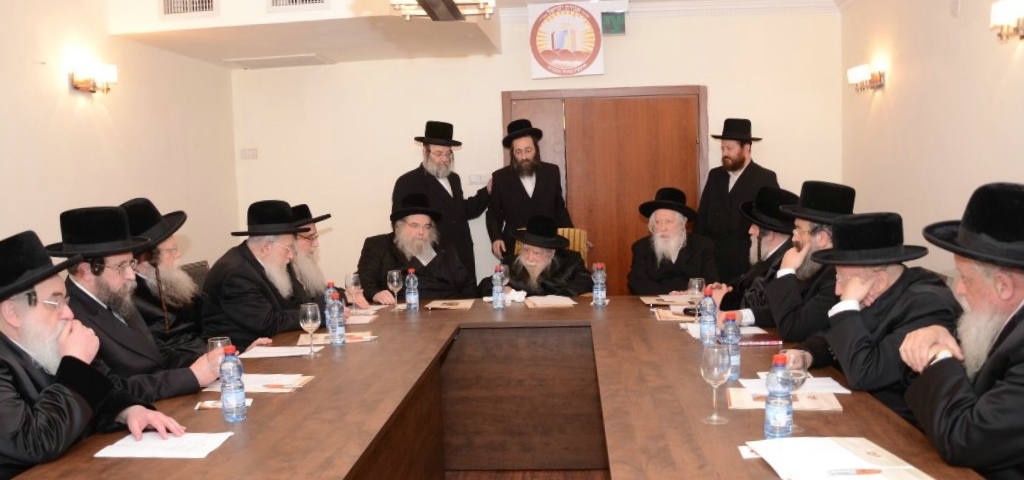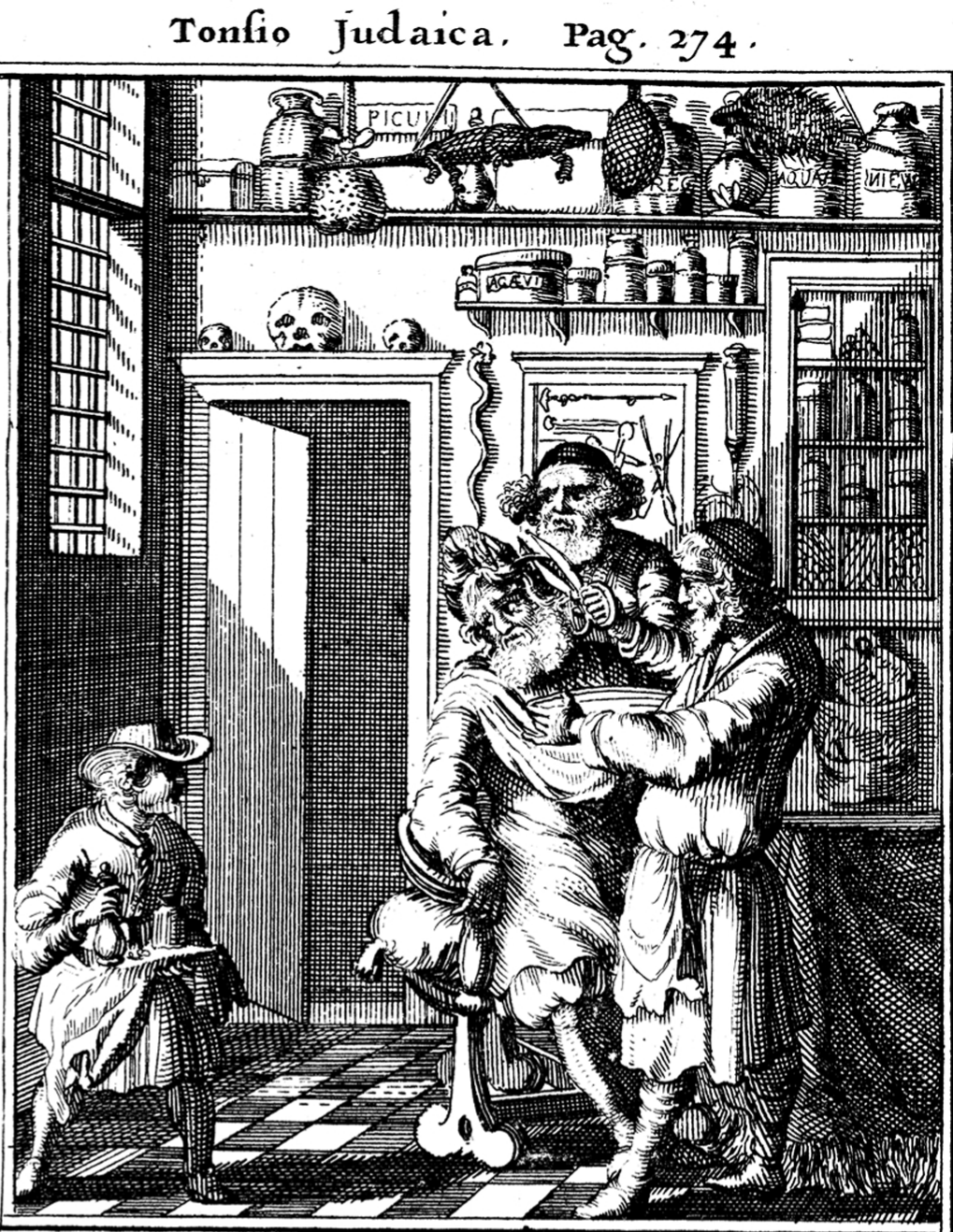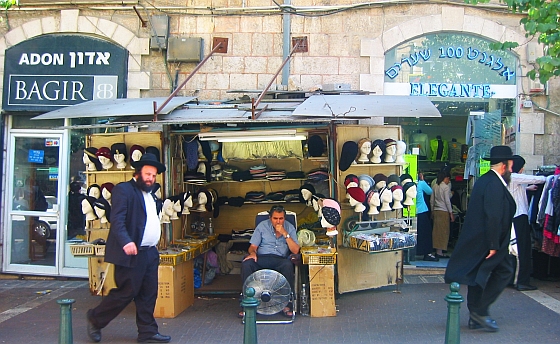|
Yitzchak Dovid Grossman
Yitzchak Dovid Grossman ( he, יצחק דוד גרוסמן) (born 15 September 1946 in Jerusalem), also known as the "Disco Rabbi", is the Chief Rabbi of Migdal HaEmek, founder and dean of Migdal Ohr educational institutions, and a member of the Chief Rabbinate Council of Israel. He is known for his work with children from disadvantaged and troubled homes, having rehabilitated tens of thousands of youth through his educational network founded in 1972. Biography Grossman is a sixth-generation Jerusalemite and the scion of a prominent Hasidic family. His father, Rabbi Yisrael Grossman, served as rosh yeshiva of Pinsk-Karlin and of Chabad in Lod, and was a member of the rabbinical court of Agudat Yisrael. His mother, Perl (1923–2012), was the daughter of Rabbi Yosef Gutfarb, a teacher at the Etz Chaim Yeshiva in the Old City of Jerusalem. He is one of six brothers and four sisters. He grew up in the Mea Shearim neighborhood of Jerusalem and attended Yeshivas Karlin. An alu ... [...More Info...] [...Related Items...] OR: [Wikipedia] [Google] [Baidu] |
Chief Rabbi
Chief Rabbi ( he, רב ראשי ''Rav Rashi'') is a title given in several countries to the recognized religious leader of that country's Jewish community, or to a rabbinic leader appointed by the local secular authorities. Since 1911, through a capitulation by Ben-Zion Meir Hai Uziel, Israel has had two chief rabbis, one Ashkenazi and one Sephardi. Cities with large Jewish communities may also have their own chief rabbis; this is especially the case in Israel but has also been past practice in major Jewish centers in Europe prior to the Holocaust. North American cities rarely have chief rabbis. One exception however is Montreal, with two—one for the Ashkenazi community, the other for the Sephardi. Jewish law provides no scriptural or Talmudic support for the post of a "chief rabbi." The office, however, is said by many to find its precedent in the religio-political authority figures of Jewish antiquity (e.g., kings, high priests, patriarches, exilarchs and ''gaonim''). T ... [...More Info...] [...Related Items...] OR: [Wikipedia] [Google] [Baidu] |
Agudat Yisrael
Agudat Yisrael ( he, אֲגוּדָּת יִשְׂרָאֵל, lit., ''Union of Israel'', also transliterated ''Agudath Israel'', or, in Yiddish, ''Agudas Yisroel'') is a Haredi Jewish political party in Israel. It began as a political party representing Haredi Jews in Poland, originating in the Agudath Israel movement in Upper Silesia. It later became the Party of many Haredim in Israel. It was the umbrella party for many, though not all, Haredi Jews in Israel until the 1980s, as it had been during the British Mandate of Palestine. Since the 1980s, it has become a predominantly Hasidic party, though it often combines with the Degel HaTorah non-Hasidic Ashkenazi Haredi party for elections and coalition-forming (although not with the Sephardi and Mizrahi Haredi party Shas). When so combined, they are known together as United Torah Judaism. History When political Zionism began to emerge in the 1890s, and recruit supporters in Europe and America, it was opposed by many Orthodox ... [...More Info...] [...Related Items...] OR: [Wikipedia] [Google] [Baidu] |
Nightclub
A nightclub (music club, discothèque, disco club, or simply club) is an entertainment venue during nighttime comprising a dance floor, lightshow, and a stage for live music or a disc jockey (DJ) who plays recorded music. Nightclubs generally restrict access to people in terms of age, attire, personal belongings, and inappropriate behaviors. Nightclubs typically have dress codes to prohibit people wearing informal, indecent, offensive, or gang-related attire from entering. Unlike other entertainment venues, nightclubs are more likely to use bouncers to screen prospective patrons for entry. The busiest nights for a nightclub are Friday and Saturday nights. Most nightclubs cater to a particular music genre or sound for branding effects. Some nightclubs may offer food and beverages (including alcoholic beverages). History Early history In the United States, New York increasingly became the national capital for tourism and entertainment. Grand hotels were built for upsca ... [...More Info...] [...Related Items...] OR: [Wikipedia] [Google] [Baidu] |
Payot
''Pe'ot'', anglicized as payot ( he, פֵּאוֹת, pēʾōt, "corners") or payes (), is the Hebrew term for sidelocks or sideburns. Payot are worn by some men and boys in the Orthodox Jewish community based on an interpretation of the Tanakh's injunction against shaving the "sides" of one's head. Literally, ''pe'a'' means "corner, side, edge". There are different styles of payot among Haredi or Hasidic, Yemenite, and Chardal Jews. Yemenite Jews call their sidelocks ''simanim'' (), literally, "signs", because their long-curled sidelocks served as a distinguishing feature in the Yemenite society (differentiating them from their non-Jewish neighbors). Rabbinic interpretation Reason According to Maimonides, shaving the sidelocks was a heathen practice. Specifics The Torah says, "you shall not round off the ''pe'a'' of your head ()". The word ''pe'a'' was taken to mean the hair in front of the ears extending to beneath the cheekbone, on a level with the nose (Talmud – Makkot 20a ... [...More Info...] [...Related Items...] OR: [Wikipedia] [Google] [Baidu] |
Hasidic Judaism
Hasidism, sometimes spelled Chassidism, and also known as Hasidic Judaism (Ashkenazi Hebrew: חסידות ''Ḥăsīdus'', ; originally, "piety"), is a Judaism, Jewish religious group that arose as a spiritual revival movement in the territory of contemporary Western Ukraine during the 18th century, and spread rapidly throughout Eastern Europe. Today, most affiliates reside in Israel and the United States. Israel Ben Eliezer, the "Baal Shem Tov", is regarded as its founding father, and his disciples developed and disseminated it. Present-day Hasidism is a sub-group within Haredi Judaism and is noted for its religious conservatism and social seclusion. Its members adhere closely both to Orthodox Judaism, Orthodox Jewish practice – with the movement's own unique emphases – and the traditions of Eastern European Jews. Many of the latter, including various special styles of dress and the use of the Yiddish language, are nowadays associated almost exclusively with Hasidism. Hasi ... [...More Info...] [...Related Items...] OR: [Wikipedia] [Google] [Baidu] |
The Jewish Journal Of Greater Los Angeles
''The Jewish Journal of Greater Los Angeles'', known simply as the ''Jewish Journal'', is an independent, nonprofit community weekly newspaper serving the Jewish community of greater Los Angeles, published by TRIBE Media Corp. ''The Journal'' was established in 1985. As of 2016 it had a verified circulation of 50,000 and an estimated readership of 150,000; it is the largest Jewish weekly outside New York City. TRIBE Media Corp. also produces the monthly ''TRIBE'' magazine, distributed in Santa Barbara, Malibu, Conejo, Simi and West San Fernando Valleys. History Though independently incorporated, the paper was initially distributed in part by the Jewish Federation of Greater Los Angeles. The first issue appeared on February 28, 1986. The editor was Gene Lichtenstein, who served until 2000, and the first art director was Katherine Arion, a Romanian-born artist who came to the United States in 1981. After becoming completely independent from the Jewish Federation in 2005, it went th ... [...More Info...] [...Related Items...] OR: [Wikipedia] [Google] [Baidu] |
Sephardi Jews
Sephardic (or Sephardi) Jews (, ; lad, Djudíos Sefardíes), also ''Sepharadim'' , Modern Hebrew: ''Sfaradim'', Tiberian: Səp̄āraddîm, also , ''Ye'hude Sepharad'', lit. "The Jews of Spain", es, Judíos sefardíes (or ), pt, Judeus sefarditas or Hispanic Jews, are a Jewish diaspora population associated with the Iberian Peninsula. The term, which is derived from the Hebrew ''Sepharad'' (), can also refer to the Mizrahi Jews of Western Asia and North Africa, who were also influenced by Sephardic law and customs. Many Iberian Jewish exiles also later sought refuge in Mizrahi Jewish communities, resulting in integration with those communities. The Jewish communities of the Iberian Peninsula prospered for centuries under the Muslim reign of Al-Andalus following the Umayyad conquest of Hispania, but their fortunes began to decline with the Christian ''Reconquista'' campaign to retake Spain. In 1492, the Alhambra Decree by the Catholic Monarchs of Spain called for the expulsi ... [...More Info...] [...Related Items...] OR: [Wikipedia] [Google] [Baidu] |
Aliyah
Aliyah (, ; he, עֲלִיָּה ''ʿălīyyā'', ) is the immigration of Jews from Jewish diaspora, the diaspora to, historically, the geographical Land of Israel, which is in the modern era chiefly represented by the Israel, State of Israel. Traditionally described as "the act of going up" (towards the Jerusalem in Judaism, Jewish holy city of Jerusalem), moving to the Land of Israel or "making aliyah" is one of the most basic tenets of Zionism. The opposite action—emigration by Jews from the Land of Israel—is referred to in the Hebrew language as ''yerida'' (). The Law of Return that was passed by the Knesset, Israeli parliament in 1950 gives all diaspora Jews, as well as their children and grandchildren, the right to relocate to Israel and acquire Israeli citizenship on the basis of connecting to their Jewish identity. For much of Jewish history, their history, most Jews have lived in the diaspora outside of the Land of Israel due to Jewish military history, various hi ... [...More Info...] [...Related Items...] OR: [Wikipedia] [Google] [Baidu] |
Galilee
Galilee (; he, הַגָּלִיל, hagGālīl; ar, الجليل, al-jalīl) is a region located in northern Israel and southern Lebanon. Galilee traditionally refers to the mountainous part, divided into Upper Galilee (, ; , ) and Lower Galilee (, ; , ). ''Galilee'' refers to all of the area that is north of the Mount Carmel-Mount Gilboa ridge and south of the east–west section of the Litani River. It extends from the Israeli coastal plain and the shores of the Mediterranean Sea with Acre in the west, to the Jordan Rift Valley to the east; and from the Litani in the north plus a piece bordering on the Golan Heights all the way to Dan at the base of Mount Hermon in the northeast, to Mount Carmel and Mount Gilboa in the south. This definition includes the plains of the Jezreel Valley north of Jenin and the Beth Shean Valley, the valley containing the Sea of Galilee, and the Hula Valley, although it usually does not include Haifa's immediate northern suburbs. By this definiti ... [...More Info...] [...Related Items...] OR: [Wikipedia] [Google] [Baidu] |
Orthodox Jewish Outreach
Orthodox Jewish outreach, often referred to as ''Kiruv'' or ''Qiruv'' ( he, קירוב "bringing close"), is the collective work or movement of Orthodox Judaism that reaches out to non-observant Jews to encourage belief in God and life according to Orthodox Jewish law. The process of a Jew becoming more observant of Orthodox Judaism is called ''teshuva'' ("return" in Hebrew) making the "returnee" a ''baal teshuva'' ("master of return"). Orthodox Jewish outreach has worked to enhance the rise of the baal teshuva movement. Varieties Hasidic Hasidic outreach is predominantly the area of the Chabad and Breslov Hasidic groups; however, other groups have also been involved in such efforts. Rabbi Yosef Yitzchok Schneersohn, Sixth leader of the Chabad-Lubavitch branch of Hasidic Judaism, and then his successor, Rabbi Menachem Mendel Schneerson were responsible for turning Chabad's activities toward outreach. Each in turn sent out rabbinic emissaries, known as " Shluchim", and thei ... [...More Info...] [...Related Items...] OR: [Wikipedia] [Google] [Baidu] |
Semikhah
Semikhah ( he, סמיכה) is the traditional Jewish name for rabbinic ordination. The original ''semikhah'' was the formal "transmission of authority" from Moses through the generations. This form of ''semikhah'' ceased between 360 and 425 CE. Since then ''semikhah'' has continued in a less formal way. Throughout history there have been several attempts to reestablish the classical ''semikhah''. In recent times, some institutions grant ordination for the role of ''hazzan'' (cantor), extending the "investiture" granted there from the 1950s. Less commonly, since the 1990s, ordination is granted for the role of lay leader - sometimes titled '' darshan''. Ordination may then also be specifically termed , "rabbinical ordination", , "cantorial ordination", or , "maggidic ordination". The title of "rabbi" has "proliferated greatly over the last century". Nowadays ''Semikha'' is also granted for a limited form of ordination, focused on the application of Halakha in specific settin ... [...More Info...] [...Related Items...] OR: [Wikipedia] [Google] [Baidu] |
Mea Shearim
Mea Shearim ( he, מאה שערים, lit., "hundred gates"; contextually, "a hundred fold") is one of the oldest Jewish neighborhoods in Jerusalem outside of the Old City. It is populated by Haredi Jews, and was built by members of the Old Yishuv. Name The name ''Mea Shearim'' is derived from a verse from Genesis, which happened to be part of the weekly Torah portion that was read the week the settlement was founded: "Isaac sowed in that land, and in that year, he reaped a hundredfold (, ''mea shearim''); God had blessed him" (). According to a tradition, the community originally had 100 gates, another meaning of ''Mea Shearim''. History Meir Auerbach, the chief Ashkenazi rabbi of Jerusalem, was one of the founders of the neighborhood. Conrad Schick, a German Christian architect, drew up the first blueprint for Mea Shearim in 1846. Mea Shearim, one of the earliest Jewish settlements outside the walls of the Old City, was established in 1874 by a building society of 100 shareho ... [...More Info...] [...Related Items...] OR: [Wikipedia] [Google] [Baidu] |

.jpg)





